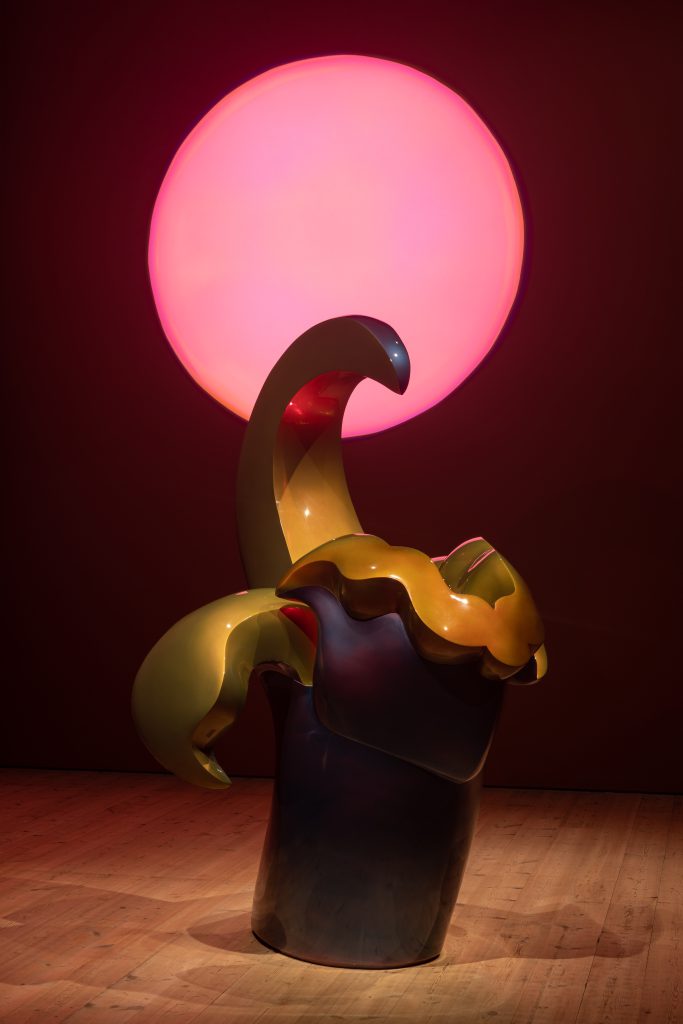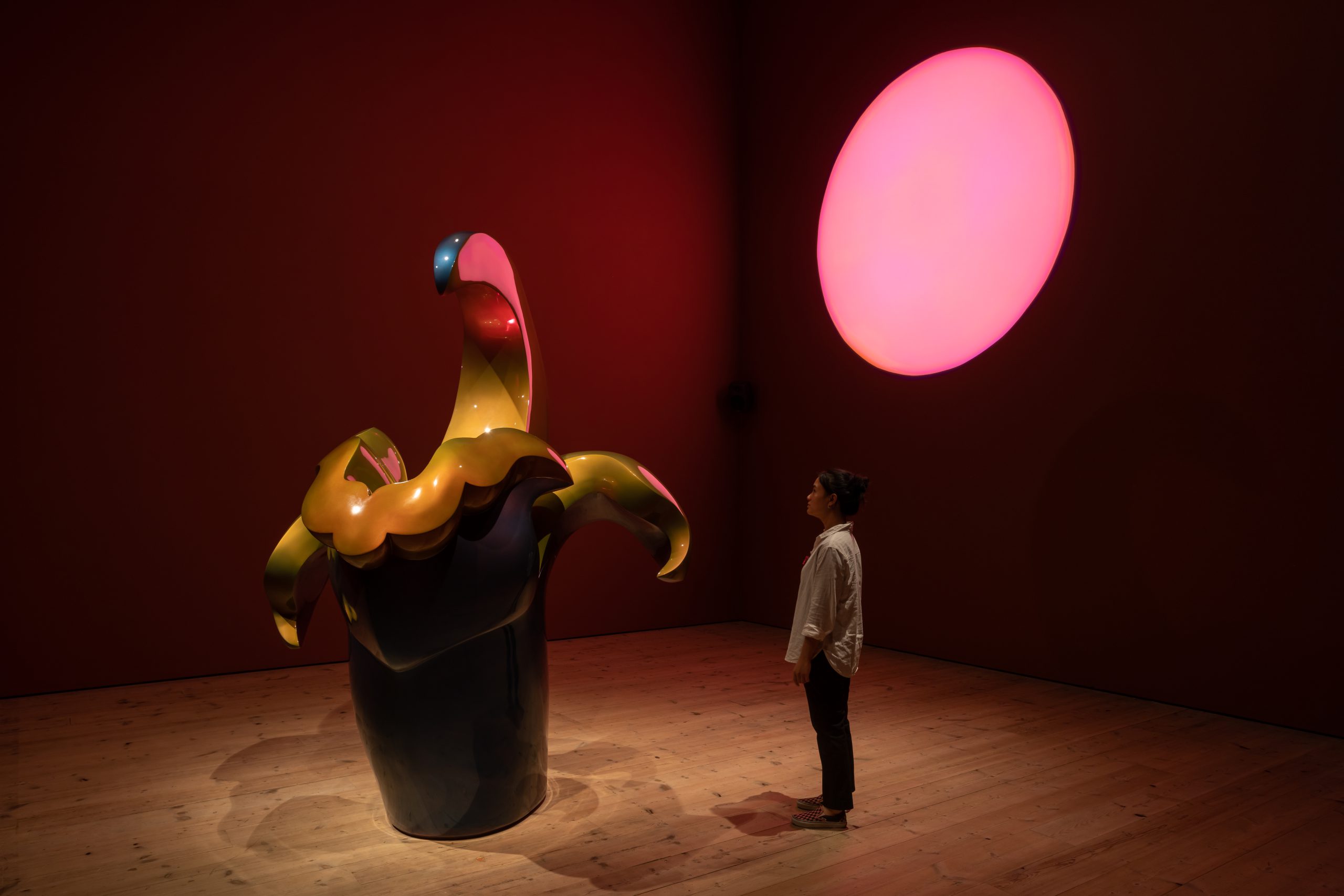At the Baltic Centre for Contemporary Art in Gateshead in the UK, Jala Wahid has created a monumental installation, Conflagration, which comments on the global implications of oil exploitation.
Jala Wahid’s first institutional exhibition, Conflagration, makes use of the double meaning of the word. In describing a fire that is difficult to put out, as well as the impact of war, it points both to the history of oil and to ongoing conflicts where the commodity has been a determining factor. Oil is neither present nor directly referenced in the installation, but its after-effects, traces and echoes of its history are represented through music, light and the fibreglass flower itself, slick with the glow of car paint.
Salvia spinosa is a species of plant specifically described as growing on the shale rocks in-between oil wells at Baba Gurgur in Kirkuk province, a contentious region disputed between Federal Iraq and the Kurdistan Region. Growing in abundance from North Africa to Afghanistan, it is as prolific as the oil in the ground was believed to be when the Baba Gurgur gusher (or oil well) was first harnessed in 1927.
After the First World War, British and French troops had occupied Mesopotamia as the partition of the Ottoman Empire saw the formation of new states (which crucially omitted Kurdistan), and the establishment of treaties and mandates that allowed the West to monopolise the region’s oil resources and maintain the presence of colonial power.

Baba Gurgur has a light at its core, representing the natural fire of the Baba Gurgur gusher, which has been burning for thousands of years. The body of the plant shifts between black, blue and purple, its gold petals lit up a fluorescent pink. Behind the monument, Sick Pink Sun (03:00 14.10.1927 – ) adds to the uncanny atmosphere, the colour evoking the impact of toxic smoke flumes, which turned the sun pink during the bombing of oil wells. There is a long bench facing the sun, inviting you to sit and bask in the unsettling light, listening to the funereal maqam, a melodic sound piece created by Wahid in collaboration with Amal Saeed Kurda, a contemporary Kurdish singer and composer. Naphtha Maqam is made up of six pieces of music that are lyrically English, but melodically Kurdish, and was produced in collaboration with Owen Pratt and performed by Amal Saeed Kurda. Naphta is a derivative of crude oil, and along with the central melody the sound piece includes a voiceover by Wahid, with excerpts from archives she visited, including the British Petroleum Archive and National Archives. The sound work touches on different moments in time, from 1927, when Baba Gurgur was first struck, to 2016 when ISIS bombed the Qayyarah oil fields, producing toxic smoke. It ends with a moment far into the future where the oil begs to be reburied back into the ground. Wahid says of the work: “Something that was really important to me was to show how the landscape and the materials I was looking at were impervious to the decisions being made about them. I didn’t want to falsify any kind of defiance or resilience on behalf of the landscape, but to show that it will eventually outlive these decisions, into an unknowable future.”
Rather than having oil physically present in the work, Wahid wanted to evoke its history and present through symbolic objects and sound; representing the substance symbolically, and making use of it as a metaphor for issues of identity, nationhood, colonialism and diaspora. Conflagration feels unsettling and mournful, surreal and alluring. The red walls, pink sun and glowing flower draw you in, its monumental scale commanding awe and attention, while the maqam and strange light establish an atmosphere of looming threat, and of poetic mourning.
Wahid evokes the performativity of politics, and its poetics, through the works in Conflagration, making a record of the relationship between Britain and Kurdistan through an emotive lens. The displaced, surreal landscape of the exhibition, and English-Kurdish maqam, work to convey something of the lack of grounding, or stable, rooted identity for diasporic peoples. It also shows the potential for beauty and light in rejecting essentialist definitions, shining a light on the urgency, euphoria and violence that shape Kurdish identity.
Conflagration runs until 30 April



